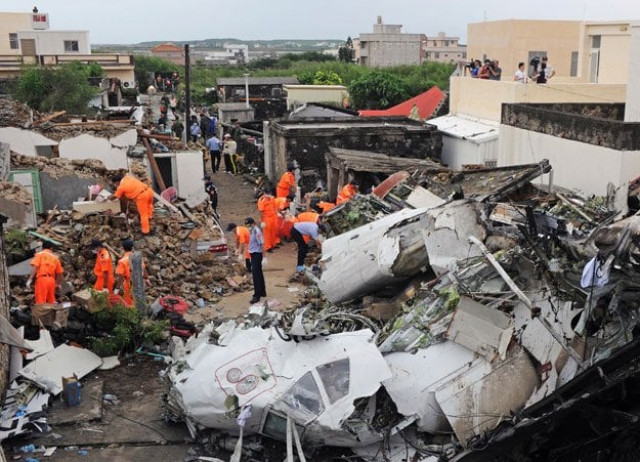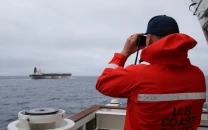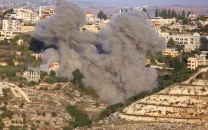Pilots blamed for 2014 TransAsia crash on Taiwan island
Pilots had been flying too low as they attempted to land on an island during a typhoon

This picture taken on July 24, 2014 shows rescue workers and firefighters searching through the wreckage where TransAsia Airways flight GE222 crashed the night before near the airport at Magong on the Penghu island chain on July 24, 2014. PHOTO: AFP
Taiwan's aviation body said the pilots flew below the minimum altitude required in poor visibility caused by Typhoon Matmo on July 23, 2014, in its final report into the airline's second fatal accident in a year.
The procedural mistake was widespread among TransAsia's pilots at the time, an aviation official said, endangering passenger and crew safety.
'Wow, pulled back wrong throttle' - captain of crashed TransAsia plane
Ill-fated Flight GE222 was carrying 54 passengers and four crew when it slammed into trees and houses near Magong city airport in the Taiwan Strait's scenic Penghu islands, leaving just 10 survivors.
Two French nationals were among those killed in the island's worst air disaster in a decade.
"An airworthy aircraft under the control of the flight crew was flown unintentionally into terrain with limited awareness by the crew of the aircraft's proximity to terrain," the Aviation Safety Council said in the investigation report.
The ATR 72-500 propeller plane had deviated off course during thunder and heavy rain as Typhoon Matmo pounded Taiwan.
"They were not visual with the runway environment, contrary to standard operating procedures," the report said.
According to flight safety regulations, the pilots were required to maintain their altitude when their plane descended to 330 feet (100 metres), but the aircraft continued to descend.
"We found the pilots did not follow the standard operating procedure," council director Thomas Wang told reporters.
TransAsia Airways plane crashes in typhoon-hit Taiwan, killing 47
"Then we discovered TransAsia's team of pilots flying the ATR fleet also had similar problems, and we wanted to know why the carrier tolerated this among its pilots, and why the Civil Aeronautics Administration (CAA) did not discover this while carrying out regular inspections," he said.
Wang said "the company's pilots were flying without abiding by standard procedures, part of a workplace culture which endangered flight safety".
According to transcripts of the plane's two black boxes, which record voices in the cockpit and other in-flight data, the co-pilot twice replied "no" when asked by the pilot whether he had seen the runway.
The investigation report identified a range of other aggravating factors, including poor communication of weather information to the flight crew, and coordination issues at Magong airport.
The Flight GE222 crash came seven months before TransAsia Airways Flight GE235 clipped a bridge and plunged into a river in Taipei shortly after take-off with 53 passengers and five crew on board. Forty-three people died.
Disturbing cockpit transcripts from the second crash revealed by the council showed pilots trying to deal with an engine which had lost power, but then reducing the thrust of the other, functioning engine.


















COMMENTS
Comments are moderated and generally will be posted if they are on-topic and not abusive.
For more information, please see our Comments FAQ